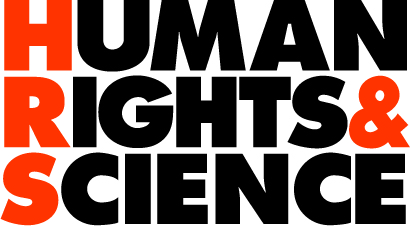Intrinsic Motivation
INTRODUCTION
Motivation is a phenomenon that explains the processes giving rise to individual energy and endurance, and it is also a pathway towards a specific behavior (Reeve, 2015). The specific behavior that we get motivated to have, varies between individuals and circumstances. Motivation enhances performance and engagement. For an individual to become motivated to have a specific behavior it is required that the behavior leads to a specific goal and that there are strength and endurance in the behavior (Reeve, 2015). It is important that the behavior has a clear connection to the aspired goal, which the person is trying to reach, and that the behavior will make a difference, which gives it relevance.
Entrepreneurs (SE) has been defined as persons who solve pressing and insurmountable social problems, making an immense, yet durable and irreversible social impact (Nowak et.al., 2020). The authors claim that SEs do these remarkable things with minimal investments, having as assets their passion, commitment, big yet realistic visons for change, creativity, and entrepreneurial skills. Opportunistic diversification have been found to flourished once resources improve (Rosa et.al., 2006). Those with low incomes however have been found to be less likely to start a business because they often became “trapped” by having to work long hours for just enough income to survive .
The groups that are benefiting from a positive change need to come together to make change happen Mungiu-Pippidi (2017) . It is through teams, that we can respond to the challenges of a changing economy.
Illicit financial flows and corruption are inhibiting African development by draining foreign exchange, reducing domestic resources, stifling trade and macroeconomic stability and worsening poverty and inequality. Tackling illicit financial flows, will open the door to releasing much needed investments in education, health and productive sectors. African Governments – in concert with Africa’s private sector actors – should take the lead in strengthening stolen asset recovery, setting new standards for avoiding illicit flows and committing to more concerted actions to combat the negative impact of illicit financial flows on African economies (UNCTAD, 2020).
HR&S addresses entrepreneurial motivation, team motivation and post-colonial motivation.

References
- Mungiu-Pippidi, A. (2017) Seven Steps to Evidence-Based Anticorruption: A Roadmap. Rapport 2017:10 till Expertgruppen för biståndsanalys (EBA). www.eba.se. ISBN: 978-91-88143-34-1. Printed by Elanders Sverige AB Stockholm 2017.
- Nowak A.K., Vallacher R.R., Praszkier R., Rychwalska A., Zochowski M. (2020) Social Entrepreneurs and Social Synchronization. In: In Sync. Understanding Complex Systems. Springer, Cham.
- Reeve, J. (2015). Understanding motivation and emotion, (6th edition). NJ: John Wiley & Sons, Inc.
- Rosa P., Kodithuwakku S. & Balunywa, W. (2006) Entrepreneurial Motivation in Developing Countries: What Does ‘Necessity’ and ‘Opportunity’ Entrepreneurship Really Mean?.Babson College
Entrepreneurship Research Conference (BCERC); Frontiers of Entrepreneurship Research 2006. Makerere University – Makerere University Business School. https://papers.ssrn.com/sol3/papers.cfm?abstract_id=1310913 - UNCTAD (2020) Economic Development in Africa Report 2020, Tackling Illicit Financial Flows for Sustainable Development in Africa. UNITED NATIONS CONFERENCE ON TRADE AND DEVELOPMENT 2020, United Nations. United Nations Publications, 405 East 42nd Street, New York, New York 10017, United States of America. www.shop.un.org. https://unctad.org/system/files/official-document/aldcafrica2020_en.pdf
ENTREPRENEUERIAL MOTIVATION
Entrepreneurs (SE) has been defined as persons who solve pressing and insurmountable social problems, making an immense, yet durable and irreversible social impact (Nowak et.al., 2020). The authors claim that SEs do these remarkable things with minimal investments, having as assets their passion, commitment, big yet realistic visons for change, creativity, and entrepreneurial skills.
Entrepreneurial activity
Rosa et.al. (2006) examined the relationship between the state of necessity and entrepreneurial activity, through qualitative case studies from Uganda and Sri Lanka, and a survey of 1006 Ugandan adults. Questions are posed on the tenability of the hypothesis that necessity is a primary motive for business start-ups in poor countries. The relationship between necessity and business start-up, though significant, is in the opposite direction from that predicted by the “necessity hypothesis”. Those with low incomes were much less likely to start a business because they often became “trapped” by having to work long hours for just enough income to survive. Opportunistic diversification, however, flourished once resources improved. The results question recent attempts to classify countries on the basis of distinctive forms of entrepreneurship based on necessity and opportunity.
Individual versus external factors
Motivation can come both from within an individual or from external factors (Reeve, 2015). External motivation, for example money, tend to have basic functions for the individual and this motivational boost is often short term and falls of once the goal is reached. Intrinsic motivation however is built upon a will to develop as an individual. The goal that leads to intrinsic motivation is to explore and learn aspects that are important for one’s psychological needs and personal values. In contrast to external motivation, intrinsic motivation comes from within oneself and is more persistent over time. Intrinsic motivation depends on three different psychological aspects; a subjective feeling of autonomy, a subjective feeling of competence and a subjective feeling of belonging. The feeling of these three phenomena is required for an individual to be driven by intrinsic motivation When an individual is driven by intrinsic motivation, the person invests more commitment, is more creative and more spontaneous. Intrinsic motivation leads to a stronger and more prolonged effort and can generate better work efforts.
Self-efficacy is a psychological phenomenon related to when we expect ourselves to have the capacity required to succeed in a particular task (Hogg & Vaughan, 2010). Self-efficacy can be seen as a type of self-confidence to a specific situation. Self-efficacy has been described as one of the most important psychological factors predicting human performance (Gruman, 2017). If an individual is lacking motivation, both intrinsic and external, then the individual has “amotivation”, which means that there is no motivation at all. Individuals that has amotivation have low levels of self-efficacy and show more incompetence as compared to motivated individuals.
This implies that motivation has a positive effect on self-efficacy and that intrinsic motivation has a more sustainable and stronger effect on self-efficacy than external motivational stimuli. From an organizational perspective, the importance of intrinsic motivation among the team members is important in order to achieve a high level of effort, creativity, and engagement, which will lead to enhanced performance.

References
- Gruman, J., Schneider, F. & Coutts, L. (2017) Applied social psychology (3rd edition). London: SAGE Publications Ltd.
- Hogg, M. & Vaughan, G. (2010) Essentials of social psychology. Edinburgh Gate: Pearson Education limited.
- Nowak A.K., Vallacher R.R., Praszkier R., Rychwalska A., Zochowski M. (2020) Social Entrepreneurs and Social Synchronization. In: In Sync. Understanding Complex Systems. Springer, Cham.
- Reeve, J. (2015). Understanding motivation and emotion, (6th edition). NJ: John Wiley & Sons, Inc.
- Rosa P., Kodithuwakku S. & Balunywa, W. (2006) Entrepreneurial Motivation in Developing Countries: What Does ‘Necessity’ and ‘Opportunity’ Entrepreneurship Really Mean?.Babson College
Entrepreneurship Research Conference (BCERC); Frontiers of Entrepreneurship Research 2006. Makerere University – Makerere University Business School. https://papers.ssrn.com/sol3/papers.cfm?abstract_id=1310913
TEAM MOTIVATION
The groups that are benefiting from a positive change need to come together to make change happen and then team-building and motivation have to be addressed (Mungiu-Pippidi, 2017).
It is through our teams, that we can respond to the challenges of a changing economy and the effective management of performance in our programmes.
Hence, the increased emphasis on improving performance through motivation. It is obvious that motivated team members perform better, and that leaders must understand their role and offer support. It can also be assumed that a safe and conducive work environment, fair performance appraisal systems, and opportunities for promotion are necessary to maintain a high level of team motivation. Furthermore, team members should be exposed to career development opportunities and motivational talks.
Motivated team members perform at a higher level, making it easy for leaders to motivate them further, thus achieving both individual and programme objectives.
It is important to consider cross-cultural management. This needs to
be attended to between for example continents, gender, and also university
educated and “life educated” people.
As well as equal partnership management. Address the “equal partnership” perception for each member of the team.
HR&S approach
According to HR&S CEO, leaders must attend to each person in a team individually. This is why groups of ten-twenty is usually optimal, a leader can attend to ten persons. Then each of the ten persons can herself attend to ten persons, and so on. Thus the network can grow without constraint and each person is attended to.

References
Mungiu-Pippidi, A. (2017) Seven Steps to Evidence-Based Anticorruption: A Roadmap. Rapport 2017:10 till Expertgruppen för biståndsanalys (EBA). www.eba.se. ISBN: 978-91-88143-34-1. Printed by Elanders Sverige AB Stockholm 2017.
Post-colonial MOTIVATION
It is widely accepted that foreign aid provided by wealthy nations during the past five decades has failed to reverse global patterns of poverty and inequality (Ovaska, 2003).
“Illicit financial flows and corruption are inhibiting African development by draining foreign exchange, reducing domestic resources, stifling trade and macroeconomic stability and worsening poverty and inequality. These illicit flows rob Africa and its people of their prospects, undermining transparency and accountability and eroding trust in African institutions. Faced with high capital flight, tax avoidance and a marked dependence on corporate income taxes, African Governments face significant constraints to widening their tax base. The UNCTAD Economic Development in Africa Report 2020 shows that the large financing gap for the Sustainable Development Goals cannot be closed solely through government revenues. Tackling illicit financial flows, however, will open the door to releasing much needed investments in education, health and productive sectors. African Governments – in concert with Africa’s private sector actors – should take the lead in strengthening stolen asset recovery, setting new standards for avoiding illicit flows and committing to more concerted actions to combat the negative impact of illicit financial flows on African economies.” Mukhisa Kituyi Secretary-General of the United Nations Conference on Trade and Development (UNCTAD, 2020).
Carlos M. Palacios wrote a paper aiming to contribute to the public and academic debate on the appropriateness of young Westerners’ participation in projects of volunteer tourism conducted in developing countries (Palacios, 2010). The results illustrate that such projects can produce similar benefits to other educational initiatives of international volunteering and service (IVS) in terms of global engagement, career development, intercultural competence, and psychological support. However, the author claims that these projects need to harmonise personal and institutional expectations with real volunteer capacities. Thus, until IVS programs in the university context distance themselves from a development aid discourse, they will potentially fall under the umbrella of “neo-colonialism”. The research provides a model of impact analysis and raises challenging questions for universities or similar organizations involved with short-term group placements of volunteer tourism. Palcios concluded that in the 1960s, when the boom of international volunteering for young Americans started through the Peace Corps program, it was clear that there were political and colonial-like intentions involved. However, the current literature about international volunteering and service (IVS) rarely comments on the political interests of the donor nations sponsoring IVS agencies. Instead, charges of neo-colonialism are currently placed on the volunteers themselves and on the “voluntourism” industry. Thus, it is important to understand that the recent comments about colonialism, have less to do with elaborated critical theories of development, and more to do with “ineffectiveness” and practical concerns. In reality, what has been at stake in most debates about volunteer tourism is not whether the help of Westerners has any relevance in the development of poor nations, but whether these Westerners possess the necessary capacities and motivations to produce effective help. Evidence of this can be found in the conclusions of many authors when they suggest that the projects have a low impact in the local communities because the young volunteers do not have enough knowledge, reflection capacity, appropriate skills or qualifications, volunteering, and international experience, time to get involved with the locals or altruistic intentions.
*Neocolonialism: the use of economic, political, cultural, or other pressures to control or influence other countries, especially former dependencies.

References
- Ovaska, T. (2003) The failure of development aid. HeinOnline 175. heinonline.org.
- Palacios, C. (2010) Volunteer tourism, development and education in a postcolonial world: conceiving global connections beyond aid. Journal of Sustainable Tourism, 18, 861-878. https://www.tandfonline.com/doi/full/10.1080/09669581003782739.
UNCTAD (2020) Economic Development in Africa Report 2020, Tackling Illicit Financial Flows for Sustainable Development in Africa. UNITED NATIONS CONFERENCE ON TRADE AND DEVELOPMENT 2020, United Nations. United Nations Publications, 405 East 42nd Street, New York, New York 10017, United States of America. www.shop.un.org. https://unctad.org/system/files/official-document/aldcafrica2020_en.pdf
Expected outcome – Teams
- Team member ability
- We need to put together a team that has the required knowledge, skills and ability to complete the tasks.
- Team members must trust each other and openly communicate, with a willingness to accept conflict.
- Have the energy to persevere when the going gets tough.
- Virtual team members require great skills. Team members will be challenged to adapt to the new technologies that link the team. Team members must also learn new ways to express themselves and communicate.
- Cross-cultural team members require great skills. Team members will be diverse and thus must be able to manage advanced communication skills.
- Team composition
- Including members with technical skills.
- Including members with interpersonal skills.
- The team should be a good mix of different types of people. Teams that bring different styles together enjoy many benefits of cognitive diversity.
- The team shall be small (4 -6 people).
- Team leadership
Ensure good team leadership- Leaders shall target to motivate, engage, and develop individuals.
- Leaders need to commit to approaching problems methodically; define the real problem and rely on facts (rather than behave instinctively), step back, be asking questions, and take time to reflect (rather than jump to conclusions).
- Positive team atmosphere
- Support socialising activities.
- Team coordination
- Ensure a well-defined team task that engages and sustains team members’ motivation.
- Ensure good methods of communication.
- Reward teams as teams (not as individuals)
- Career and reward systems must include an incentive to work collaboratively.
- Decide carefully which problems to be tackled by the team and choose issues that need collective, cross-boundary expertise. Avoid issues that could be handled by individual functions, as these can be addressed as part of business-as-usual.
- Team training
- Training teams help teams develop, test, and run processes such as coordination. It also enables team members to build trust and share information and knowledge
- Training teams develop a shared memory of the awareness and ability of the team to identify and process information. Teams develop an awareness of which team member has knowledge on which topic
- Leadership training shall improve our ability to motivate, engage, and develop individuals.
- Virtual team members need training on the new technologies that link the team and new ways to express themselves and communicate.
- Cross-cultural teams benefit from workshops based on the practical strategy CROSS. These workshops contain team-building exercises including; expectations, core-values, equal partnership definitions, leadership training, and analysing the positioning of one culture relative to another while transforming differences into assets.
- Ensuring that teams feel accountable for the success of the whole company
- Each individual must have a shared belief in the end goal.
- Each individual should have a clear understanding of how their actions contribute to the end goal.
- Including teams and team members in the process of deciding which problems to tackle, which solutions are best, and the actions to be taken going forward.
- Benefit from a flat type of organisation, where teams and team members are encouraged to provide advice to the management and the management is transparent regarding their decisions in relation to the team’s advice.
- Ensure that our teams have the necessary authority to succeed
- There needs to be a careful balance between managerial and team authority.
- Managers need to provide direction (where the team is aiming) and set outer limit constraints on team behaviour (things the team must never do).
- The team must have full authority for the methods to accomplish their tasks.
- Establish team boundaries, giving the team authority to manage their internal processes and their internal and external relationships.
- Team members are energised to take risks: this will create an innovative environment, where individuals will learn from each other and outside ideas.
- Clear boundaries. Clear and specific expectations of the extent and limits of the team’s accountability and authority limits.
- Ensure the technology and other requirements
- The virtual team requires access to new technologies that link the team. Set clear goals and ensure good communication.

11. Process for problem-solving.
It is important to have a problem-solving process. Identifying and solving problems, particularly before they grow into a crisis, is a skill that can be learned.
Through having a process, we will generate more ideas faster and select ideas faster. If we find we always get the same results from our problem-solving/innovation meetings – maybe it is time to take a different view. Reframing our problem and looking at it from different perspectives or viewpoints can help us to find different solutions – many of them different from the usual raft of solutions. A change of focus can reveal a solution that was lying just outside our frame of vision.
Identifying problems
- Before we can acknowledge a problem, we have to be aware of it. Thus, good problem-solving begins with having an openness to talking about problems, hidden problems will remain and will keep us from reaching our goals.
- We have to have a willingness to see problems wherever they may be. Such williness tends to depend on our capability to acknowledge problems without judgment.
- We need to understand that small problems matter as much as large organisational problems.
Approaching problems methodically
- Define the problem. Clarify what should be happening and what is happening. The gap between the two is where the problem lies. Defining the problem well ensures that the team has a shared understanding of the real issue.
- Identify the root causes. Learn as much as possible about the problem, preferably by observing it as it occurs. Observation and questioning partners and team members provide a powerful and immediate source of insights into processes, workflows, capabilities, and frustrations with current ways of working.
- Develop a solution. Crafting a good solution rests on distinguishing cause from effect. A solution that tackles the root cause will eliminate the symptom that the problem causes; if the root cause has truly been found, removing the proposed solution will lead to the symptom’s return.
- Test and refine the solution. The solution must be tested to ensure it has the expected impact. If it solves only part of the problem, further rounds of the problem-solving process may be needed before the problem disappears completely. For validation, conduct a final experiment without the solution to see if the problem recurs.
- Adopt new standards. The last step is to incorporate the solution into standards for work, with training and follow-up to make sure everyone has adopted the new method. That should eliminate any possibility of recurrence; moreover, sharing the solution more broadly across the company allows others to glean insights that might be applicable in seemingly different scenarios.
Ensure problem-solving teams
- Ensure continuous improvement, problems never cease to arise.
- We aim to be a true problem-solving organisation and we aim to have the ultimate goal for everyone in the organisation to own the responsibility and take the initiative to solve the problems that are most relevant to them. We are aware of that in a true problem-solving organisations people build capabilities more quickly and collaborate across internal boundaries more effectively. Using a problem-solving process also allows teams to move faster, avoiding competition or conformity
- Leaders shall be following a constant problem-solving approach, define the real problem, and rely on facts (rather than behave instinctively). Thus, leaders need to step back, be asking questions and take time to reflect (rather than jump to conclusions). Leaders need to commit to approaching problems methodically.
STRATEGY FOR CHANGE
Expected outcome

CHARACTERS TO BE AWARE OF & KNOW HOW TO HANDLE
People have different characters, and as team-leaders, we have to be able to manage each and everyone and make each and every-one feel safe and comfortable.
People are who they are and we do not judge. We must have the capacity to love and respect everyone.
Narcissism
Some has a special character that we call “narcissism”. It is quite common, maybe 15 % of the population has this. These people tend to have very good innovative ideas, work hard, be goal-oriented, and deliver a lot. They are also self-centered and target what is good for themselves. They do not pay attention to other people´s feelings, and that is also why they achieve a lot. Many famous people are narcissists.
This character is just a fact, not good nor bad, it is what it is. The thing is that we as leaders we have to recognise who these people are among our team members and treat them according to what makes sense to them. Which is different from how we treat other people.
They will perform very well, and be happy and content if they see how they benefit themselves. They also feel entitled, and cannot take advice from other people. They get furious if someone challenges them.
We shall not fight any-one, but prove to a narcissist that f ex financial and programme accountability will benefit the person her or him-self.
We need a very skilled team-leaders, who can manage everyone. Who can love, respect and motivate everyone.

